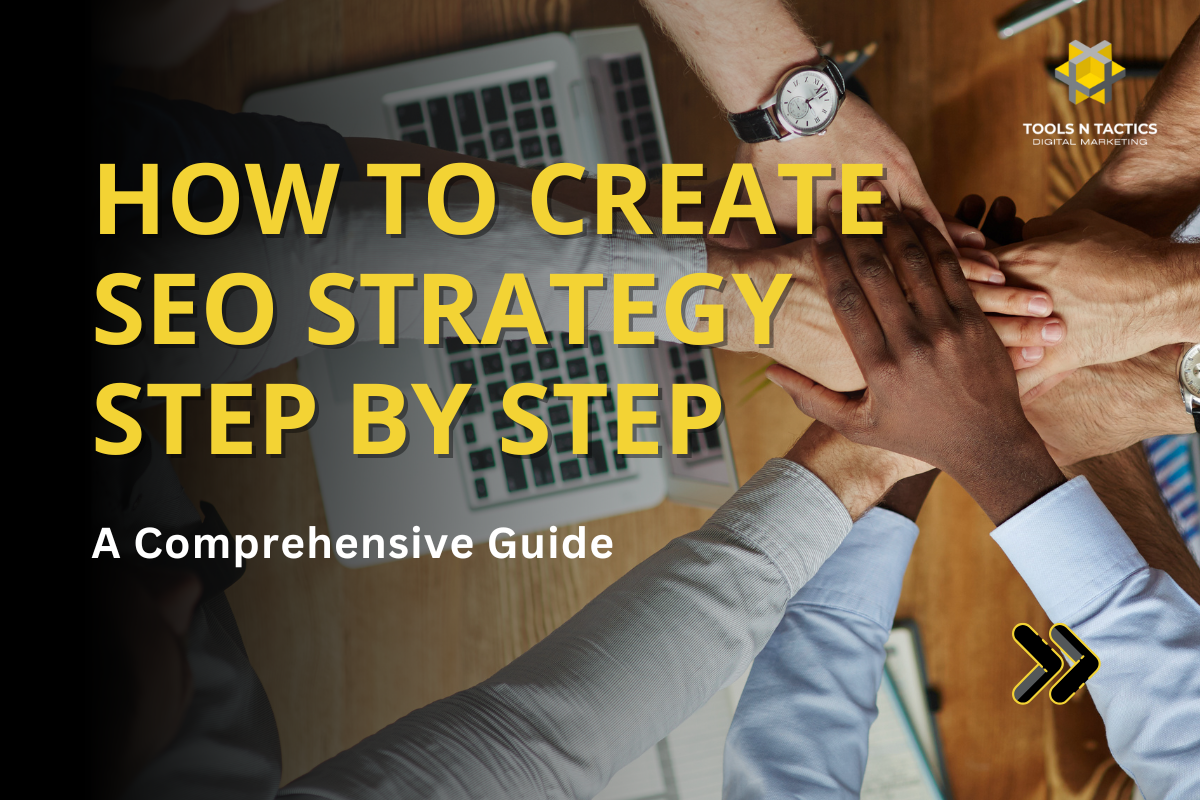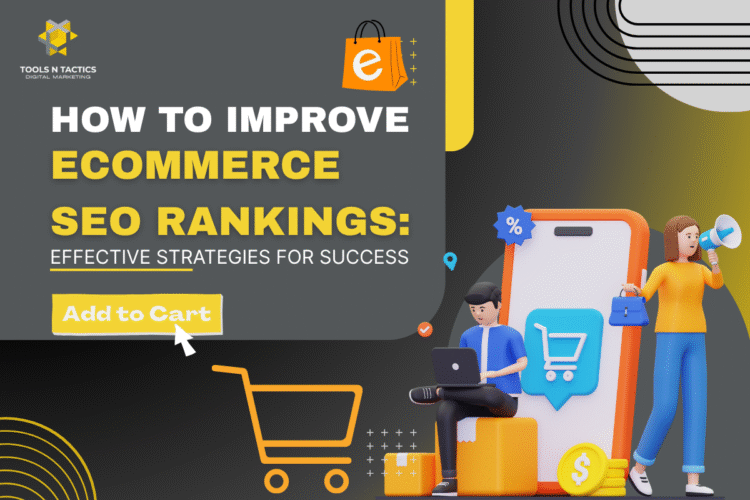

Creating an effective SEO strategy can seem daunting, but it’s essential for enhancing your online presence and driving traffic to your website. The right SEO strategy helps you attract targeted visitors actively looking for your services, engaging them in ways that convert clicks into customers. Understanding the step-by-step process allows you to systematically boost your search engine rankings and improve your website’s overall performance.
In this guide, you will learn key elements of a successful SEO strategy, from keyword research to on-page optimization and technical SEO. By applying these steps, you can tailor your approach to meet the unique needs of your business, ensuring sustainable growth in a competitive landscape. Prepare to take actionable steps that elevate your brand and connect with your ideal audience.
Setting Clear SEO Goals
Establishing clear SEO goals is essential for guiding your digital marketing efforts. By defining specific objectives, you can align your SEO strategies with your overall business goals and measure progress effectively.
Identifying Business Objectives
Start by pinpointing your core business objectives. Consider what you want to achieve in the short and long term. Are you aiming to increase sales, improve brand awareness, or enhance customer engagement?
Your objectives should relate directly to your SEO efforts. For instance, if your goal is to boost sales, your SEO strategy might focus on improving organic traffic to your product pages. Align your SEO goals with business targets to ensure every effort contributes to growth.
Defining Key Performance Indicators
Key Performance Indicators (KPIs) allow you to measure the success of your SEO strategy. Commonly used KPIs include organic traffic, conversion rates, and bounce rates.
Identify which KPIs are relevant to your specific goals. For example, if brand awareness is a priority, focus on metrics like impressions and organic visits. Conversely, track conversion rates to examine how effectively your traffic is turning into leads or sales. Setting these indicators provides a clear framework for evaluating SEO performance over time.
Aligning SEO with Brand Awareness
Elevating your brand’s visibility should be a primary focus in your SEO strategy. This involves optimizing for keywords associated with your brand and industry to ensure that potential customers can easily find you online.
Consider creating content that not only addresses customer needs but also highlights your brand’s unique value proposition. By consistently delivering quality content and improving your site’s SEO, you can enhance brand awareness, leading to increased trust and engagement with your target audience.
Selecting SEO Metrics to Track
Monitoring the right SEO metrics is crucial for assessing progress. Metrics such as organic search rankings, click-through rates, and user engagement statistics should be regularly checked.
Establish a routine for analyzing these data points. For instance, use Google Analytics to track user behavior on your site. This will help you understand how users interact with your content and identify areas for improvement. By focusing on relevant metrics, you can adapt your strategy effectively and achieve your SEO goals more efficiently.
Comprehensive Keyword Research and Search Intent


Effective keyword research sets the foundation for your SEO strategy. Understanding search intent allows you to align your content with what users are looking for, driving organic traffic and improving your keyword rankings.
Finding Keyword Opportunities
Begin by brainstorming core topics relevant to your business. Utilize tools like the Keyword Magic Tool from Semrush or Ahrefs to discover long-tail keywords related to these topics. Long-tail keywords often have lower competition and higher conversion rates. Check autocomplete suggestions from search engines and use related searches to uncover additional keyword opportunities.
Create a list of potential keywords, focusing on their search volume and relevance to your audience. Pay attention to seasonal trends and emerging topics in your industry. By diversifying your keyword list, you can better target various user personas and capture traffic that may convert into customers.
Analyzing Search Intent
Understanding user intent is crucial for creating content that resonates with your audience. There are typically four types of search intent: informational, navigational, transactional, and commercial.
- Informational: Users seek answers to questions or general knowledge.
- Navigational: Users look for a specific brand or website.
- Transactional: Users are ready to make a purchase.
- Commercial: Users are comparing products or services.
Identify the primary intent behind your target keywords. Tailor your content to meet those needs, ensuring you provide valuable information that aligns with what users seek. This understanding enhances user experience and can elevate your position in SERPs.
Leveraging SEO Tools for Research
Utilizing advanced SEO tools can streamline your keyword research process. Tools like Ahrefs and Semrush provide comprehensive insights into keyword performance, including search volume, difficulty, and current rankings.
Explore features like competitor analysis to uncover what keywords are driving traffic to similar businesses. Use these insights to identify gaps in your strategy and to capitalize on keywords that may have been overlooked. Tools can also assist in tracking your keyword progress over time, helping you adjust your strategy as needed.
Evaluating Keyword Difficulty and Trends
Assessing keyword difficulty is vital for developing a realistic SEO strategy. Tools like Semrush offer a keyword difficulty score that indicates how challenging it will be to rank for a specific phrase.
Analyze trends in your selected keywords to determine if they are gaining or losing traction. Google Trends can be beneficial for this purpose. Focusing on less competitive, trending keywords can provide quicker wins in building your organic traffic.
Establish a balance between high-traffic keywords and those with lower competition. This approach allows you to strategically target keywords that align with your business goals while maximizing your potential for visibility in search results.
Content Creation and SEO Optimization


Creating high-quality content and optimizing it for search engines are crucial steps in your SEO strategy. Focus on planning effective content, optimizing on-page elements, and enhancing content quality to improve readability and user engagement.
Planning SEO Content
Begin by conducting keyword research to identify the terms your target audience is searching for. Tools like Google Keyword Planner can help you find relevant keywords that drive traffic. Create a content calendar to outline when and how often you will create this content.
Prioritize your topics based on search volume and relevance to your audience. Consider user intent—are they looking for information, making a purchase, or seeking reviews? Structure your articles accordingly to meet these needs. Finally, incorporate different content types like blog posts, videos, and infographics to keep your audience engaged.
Optimizing On-Page Elements
On-page SEO focuses on optimizing individual web pages to rank higher in search results. Start with your title tags and meta descriptions; ensure they are concise, include target keywords, and entice users to click.
Use headings effectively to break up your content. Use H1 for titles and H2 or H3 for subsections. This not only improves readability but also helps search engines understand your content’s structure.
Incorporate internal and external links, ensuring they’re relevant to provide additional context or authority. Also, optimize images with appropriate alt text to enhance user experience, which is crucial for retaining visitors.
Improving Content Quality and E-E-A-T
E-E-A-T stands for Experience, Expertise, Authoritativeness, and Trustworthiness. To enhance these aspects, ensure your content is accurate and well-researched. Citing credible sources and including author bios can establish authority.
Engage users with compelling, well-organized content that addresses their queries. Use bullet points, lists, and short paragraphs to aid readability. Regularly update your content to keep it fresh and relevant, signaling to search engines that your site is active.
Encourage user feedback and reviews. Positive reviews can bolster trust, enhance your online reputation, and contribute to higher rankings. Always aim for a balance between quality content and SEO best practices to maximize your visibility in search engines.
Technical SEO and Website Performance
Technical SEO plays a critical role in enhancing website performance. Key elements include ensuring mobile-friendliness, optimizing site architecture, and managing security—all crucial for improving user experience and search engine rankings.
Ensuring Mobile-Friendliness and Speed
Mobile-friendliness is essential as mobile traffic continues to grow. Use responsive design to ensure your site adapts to different screen sizes. You can test your website’s mobile usability using tools like Google PageSpeed Insights to identify areas for improvement.
Optimize images and leverage browser caching to improve loading times. A site that loads quickly is likely to rank higher, as speed is a ranking factor for Google. Reduce redirects and minimize HTTP requests, which can significantly impact mobile performance.
Implementing Structured Data and Indexing
Structured data helps search engines understand your content better, improving your visibility in search results. This can enhance your listings with rich snippets, which can increase click-through rates.
Use schema markup to highlight relevant information, such as product details and reviews. Creating a clear robots.txt file also ensures search engines know which pages to index. Regularly monitor your indexed pages to identify any broken links that could negatively affect user experience and SEO performance.
Managing Site Security and Accessibility
Security is vital for maintaining user trust. Implement HTTPS to secure data transfer and protect user information. Search engines favor secure websites, so this can contribute to better rankings.
Accessibility is also critical. Ensure your site is navigable for all users, including those with disabilities. Utilize alt tags for images and provide descriptive labels for links. These practices not only comply with regulations but enhance overall user experience, positively impacting your SEO.
Off-Page SEO and Link Building Strategies
A strong off-page SEO strategy enhances your site’s authority and visibility. Key elements include building a robust backlink profile, conducting outreach for guest posting, utilizing social media, and assessing competitors’ SEO tactics.
Building a Strong Backlink Profile
Establishing a solid backlink profile is vital for enhancing domain authority. Start by identifying high-quality websites within your niche and develop a list of potential link sources. Aim for diverse backlinks from reputable sites to improve your site’s credibility.
Monitor your existing backlinks to remove any toxic or low-quality links. Tools like Ahrefs or Moz can help in analyzing your backlinks. Focus on acquiring links naturally through valuable content and reliable relationship building. Regularly updating your content can also attract organic backlinks as your expertise becomes recognized.
Conducting Outreach and Guest Posting
Outreach is a proactive approach to link building. Craft personalized emails to webmasters, bloggers, or influencers in your niche. Introduce yourself, express genuine interest in their content, and suggest specific ways you can contribute. Guest posting on relevant blogs can build authority and provide valuable backlinks to your site.
When guest posting, ensure your content is high-quality and adds value to the host’s audience. Include links to your site naturally within the content. This not only helps in building backlinks but also drives targeted traffic back to your website, ultimately enhancing your SEO efforts.
Utilizing Social Media and Brand Mentions
Social media plays a key role in modern off-page SEO strategies. By sharing your content on platforms like Twitter, LinkedIn, or Facebook, you can increase visibility and encourage others to link back to your site. Engaging posts can also prompt discussions, fostering brand mentions across various channels.
Monitor brand mentions using social listening tools. When your brand is mentioned without a link, reach out to the author and kindly request they update it with a link to your site. This not only helps accumulate backlinks but also builds relationships with your audience and industry peers.
Assessing Competitors’ SEO Strategies
Understanding competitors’ SEO strategies can provide insights into effective backlink and off-page tactics. Use tools like SEMrush or SpyFu to analyze the backlink profiles of your main competitors. Look for gaps in your own strategy compared to theirs and identify potential opportunities for outreach.
Pay attention to the types of content that generate the most backlinks for your competitors. This can guide your content creation efforts. By discovering where competitors are succeeding, you can refine your own strategies to boost your site’s authority and rankings.
Tracking, Analytics, and Continuous Optimization


In the realm of SEO, the ability to track, analyze, and optimize your performance is vital for success. Effective monitoring enables you to make informed decisions and adapt your strategies as necessary. Understanding how to use various tools and metrics will empower you to enhance your SEO efforts effectively.
Setting Up SEO Analytics Tools
Begin by integrating essential SEO analytics tools. Google Analytics and Google Search Console are key for tracking user behavior and site performance. Google Analytics provides insights into traffic sources, visitor demographics, and user engagement on your site. Meanwhile, Google Search Console allows you to monitor your search engine rankings and identify issues impacting your website’s visibility.
Set goals within Google Analytics to measure performance against specific KPIs. This can include metrics such as conversion rates, bounce rates, and session durations. Ensure you’ve verified your site in Google Search Console for complete access to indispensable data regarding search queries and crawl errors.
Monitoring SEO Performance Metrics
Regularly review your SEO performance metrics to gauge your strategy’s effectiveness. Focus on critical SEO metrics such as keyword rankings, organic traffic, and click-through rates. These metrics indicate how well your site is performing in SERPs and can highlight areas needing improvement.
Utilizing AI tools and platforms like ChatGPT can analyze trends, offering recommendations based on current data. Track changes over time to understand how adjustments in your content or keyword strategies impact your performance. This ongoing analysis will help you stay informed about SEO trends and positioning right within your niche.
Adapting SEO Strategy Over Time
Your SEO strategy should not be static. As you gather data, use it to refine your approach continuously. Regularly update your keyword strategy based on performance metrics and emerging trends. If certain keywords are underperforming, consider adjusting your content or optimize pages targeting more relevant terms.
Stay alert to changes in search engine algorithms. These changes can significantly affect rankings. Use insights from your analytics tools to pivot your strategy as necessary, ensuring alignment with evolving SEO best practices. This adaptive approach will enhance your ability to maintain and improve your search engine rankings over time.
Frequently Asked Questions
As you develop your SEO strategy, several key aspects may arise. Addressing these frequently asked questions can enhance your understanding and application of effective SEO practices.
What are the fundamental steps for beginning SEO on a new website?
Starting SEO on a new website involves several fundamental steps. First, conduct thorough keyword research to identify relevant terms your audience searches for. Next, optimize your website structure, ensuring it is user-friendly and search engine accessible. Afterwards, create high-quality, relevant content, and establish backlinks to improve authority and rankings.
Can you provide a step-by-step SEO strategy for improving search engine rankings?
An effective SEO strategy consists of a series of structured steps. Begin with setting clear SEO goals aligned with your business objectives. Follow this by performing a comprehensive audit of your current site. Conduct keyword research, optimize on-page elements, and enhance technical aspects like site speed and mobile responsiveness. Finally, build links and monitor your progress with analytics tools.
What elements should be included in an SEO strategy plan?
An effective SEO strategy plan should include several essential elements. Clearly defined goals provide direction, while keyword analysis identifies target search terms. Content strategy, on-page optimization techniques, and technical SEO aspects should also be outlined. Lastly, a link-building strategy and performance tracking metrics are crucial for ongoing refinement.
How does SEO integrate into an overall digital marketing strategy?
SEO plays a vital role in your digital marketing strategy. It enhances website visibility, driving organic traffic that complements paid advertising efforts. By optimizing your content for search, you align with social media and email marketing initiatives. This integration fosters a cohesive brand presence and improves user engagement across various platforms.
What are the best practices for conducting keyword research for SEO purposes?
Effective keyword research involves several best practices. Start by using tools that provide insights into search volume, competition, and trends. Focus on long-tail keywords that reflect user intent. Analyze competitor strategies to uncover additional relevant keywords, and continuously update your list based on changing trends and performance analysis.
How can one measure and analyze the effectiveness of an SEO campaign?
To measure the effectiveness of your SEO campaign, utilize various analytics tools. Monitor key performance indicators such as organic traffic, bounce rates, and conversion rates. Analyze rankings for target keywords over time, and evaluate the impact on sales or lead generation. Regularly review and adjust your strategy based on these insights for continuous improvement.
Ready to put your SEO into action? At Tools ’N Tactics, we build strategies that boost rankings, increase traffic, and turn clicks into customers. Whether you’re starting fresh or refining your current plan, our team helps you execute an SEO strategy step by step, designed to fit your business goals. Let’s grow your visibility today. Contact Tools ’N Tactics now!




